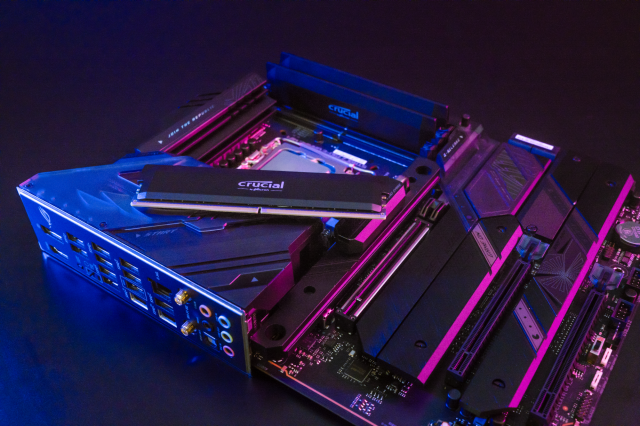When shopping for or building a computer, one of the most common questions people ask is, “How much RAM do I actually need?” Whether you’re a casual user or someone who runs high-performance applications like video editing software or games, the amount of RAM you choose will significantly impact how well your computer runs. So, let’s dive into how much RAM is necessary based on different tasks and how you can determine the right amount for your needs.
Understanding RAM: The Basics
RAM (Random Access Memory) is the short-term memory of your computer. Unlike your hard drive or SSD, which stores data long-term, RAM temporarily holds data that your computer actively uses. This makes it possible to quickly access information without waiting for it to be read from slower storage devices.
In short, RAM acts like a workspace for your computer. The more RAM you have, the larger your workspace, which means you can juggle more tasks at once without slowing down.
How RAM Impacts Different Tasks
RAM and Multitasking
If you like to have several tabs open while also streaming music, editing documents, and chatting on social media, more RAM will help. The computer needs sufficient memory to manage all these tasks simultaneously without freezing or slowing down.
RAM and Gaming Performance
For gamers, RAM is crucial. Games load large amounts of data, including textures, maps, and dynamic elements, into memory. Insufficient RAM can lead to frustrating stutters or frame drops.
RAM for Video Editing and Graphic Design
Creative professionals need ample RAM to handle large files, such as high-resolution video and complex graphics. If you’re editing 4K video, for instance, insufficient RAM could make your editing timeline choppy and significantly slow down render times.
RAM for Everyday Tasks
For general use, like browsing the web, checking emails, or using office programs, the demands on RAM are much lower. However, even here, modern web browsers like Chrome are known for eating up memory quickly, especially if you have numerous tabs open.
How Much RAM Do You Need for Different Use Cases?
For Basic Everyday Use (Browsing, Word Processing)
If your primary tasks are light — such as browsing the web, working on Word documents, and streaming — 4GB to 8GB of RAM is more than enough. With 4GB, you can comfortably handle these tasks, but with 8GB, you have a bit more wiggle room, especially if you like to multitask.
For Gamers
Gaming demands more from your system, and the amount of RAM you need can vary based on the game. Most modern games recommend at least 8GB, but many newer titles benefit from 16GB to avoid stuttering or lag. Some high-end AAA games, especially those with complex worlds and textures, can take full advantage of 32GB.
For Video Editing and Graphic Design
If you’re into video editing or graphic design, 16GB should be your baseline. However, professionals working with large, complex projects in 4K or higher resolutions might need 32GB to avoid system slowdowns.
For Programmers and Developers
Coding itself isn’t very memory-intensive, but running multiple virtual machines or compiling large projects can quickly chew through RAM. If you’re developing software or working on complex coding tasks, 16GB to 32GB is recommended, especially if you’re working with virtual environments.
For Professional Workstations
For high-end professional tasks such as 3D rendering, scientific simulations, or machine learning, more RAM is essential. Workstations designed for these tasks often come with 64GB or more to ensure there’s enough memory to handle large datasets and computations.
How RAM Works in Conjunction with Other Hardware
RAM doesn’t work in isolation; it partners with other components, such as your CPU and storage, to optimize performance. The CPU pulls data from RAM, and if there’s not enough, it has to fetch it from slower storage devices.
Similarly, SSDs (Solid State Drives) have made it easier for systems to compensate for low RAM through faster access to virtual memory (a space on your hard drive used when RAM is full), but nothing beats having ample physical RAM.
How to Check How Much RAM You Have
Wondering how much RAM is already in your system? Here’s how to check:
Windows Users
- Press
Ctrl + Shift + Escto open the Task Manager. - Go to the “Performance” tab.
- Click on “Memory” to see how much RAM you have.
macOS Users
- Click on the Apple menu and choose “About This Mac.”
- You’ll see the amount of memory (RAM) listed under the “Overview” tab.
How to Upgrade Your RAM
Can You Upgrade Your RAM?
Before upgrading, it’s important to know if your computer allows it. Most desktop computers make RAM upgrades relatively easy, while laptops may have soldered RAM, making upgrades impossible. Always check your device’s specifications.
Choosing the Right RAM for Your System
RAM comes in different types (DDR3, DDR4, DDR5), and your motherboard will only support specific kinds. Ensure the new RAM is compatible with both your motherboard and processor.
What Happens If You Don’t Have Enough RAM?
If your system doesn’t have enough RAM, it will struggle to handle multiple tasks. You might experience frequent freezing, slow application launches, or crashes. It could also rely heavily on virtual memory, which is much slower than RAM.
What Happens If You Have Too Much RAM?
Is there such a thing as too much RAM? Technically, yes. For most users, anything beyond 32GB is overkill, and you won’t notice any difference. Once your system has more RAM than it needs, it simply won’t use the excess, meaning you’ve spent money for no added benefit.
Future-Proofing: How Much RAM Do You Need in 2024 and Beyond?
As software becomes more complex, the need for RAM will continue to increase. If you’re buying or building a new system in 2024, aim for at least 16GB, even if you don’t need it right now. This ensures you’re future-proofed for more demanding applications.
Conclusion
When deciding how much RAM you need, consider the tasks you perform most often. For casual browsing and light work, 8GB is more than enough. Gamers and creative professionals should aim for 16GB to 32GB, while workstation users might need 64GB or more. Remember, RAM is just one part of the performance puzzle, so balance it with your CPU, GPU, and storage needs for the best experience.
FAQs
- Does RAM affect battery life in laptops?
Yes, more RAM can drain your battery faster, but the difference is usually minor unless you’re using intensive programs. - Can you use different RAM brands together?
You can, but it’s not always recommended. Mixing different brands can lead to compatibility issues or performance drops. - How much RAM does Windows 11 need to run smoothly?
Windows 11 requires at least 4GB of RAM, but 8GB or more is recommended for a smoother experience. - What’s the difference between physical RAM and virtual memory?
Physical RAM is actual memory chips in your computer, while virtual memory uses part of your hard drive to supplement RAM when needed. - What’s more important: RAM or CPU for performance?
Both are important, but it depends on your tasks. For multitasking and heavy applications, more RAM can be crucial, while the CPU is key for processing speed.





Leave a Reply